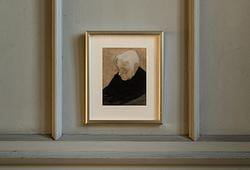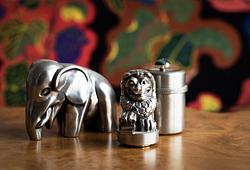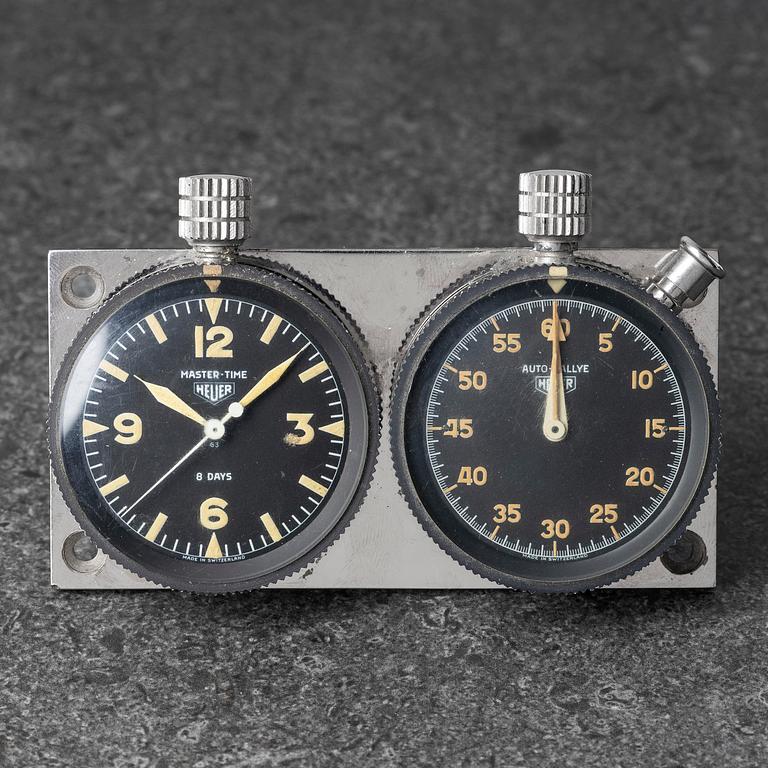Heuer, Master-Time/Auto Rallye, ca 1960.
Case size: 54 mm
Material: white metal
Movement: manual, caliber Arogno 28H / A. Schild 1564
Case number: 21'443 / 50'478
Year: circa 1960
Wear due to age and use.
A simple function check indicated the movement runs; accuracy, power reserve and long-term performance have not been tested and servicing may be required at the buyer’s expense. Water resistance cannot be guaranteed and should be checked by a qualified watchmaker before any exposure to water. No right of withdrawal applies to live auction purchases.
More information
The Heuer Master Time and Heuer Auto-Rallye formed a classic pair of dashboard-mounted timepieces during the 1950s to 1970s, developed specifically for motorsport and rally use. The combination of a precision timekeeper with a long power reserve and a separate stopwatch allowed drivers and co-drivers to measure stages and total elapsed time with great accuracy—long before digital rally timing systems became available.
The Heuer Master Time is an eight-day dashboard clock equipped with the manual Arogno caliber 28H movement, a robust and reliable mechanism. Introduced in the late 1950s as an evolution of Heuer’s earlier Hervue clocks, it was produced in various versions up until the mid-1980s. Its purpose was to provide an accurate reference time inside the rally car, making it easier to coordinate timing with the stopwatch. The distinctive black dial with bold Arabic numerals, luminous markers, and large hands ensured excellent legibility even in poor lighting conditions, while the case featured Heuer’s characteristic bayonet mounting system for secure attachment to the dashboard.
The Heuer Auto-Rallye, offered here together with the Master Time, is a mechanical 60-minute stopwatch powered by the A. Schild caliber 1564. This movement allowed the start, stop, and reset pusher to be positioned to the right of the crown, creating an ergonomic layout designed for rally use. The Auto-Rallye was introduced in the mid-1950s and evolved alongside Heuer’s other dashboard timers, such as the Monte Carlo and Sebring. The version fitted with the 1564 movement represents one of the later metal-case models, featuring a threaded bezel, sturdy construction, and a clear 60-minute register.
Together, the Master Time and Auto-Rallye form a quintessential and highly functional Heuer set, often mounted on a shared metal plate in competition cars. The combination symbolizes Heuer’s pioneering role in sports timing, where precision, legibility, and durability were paramount. Today, these instruments are highly sought-after collector’s pieces, carrying a strong historical connection to an era when rally timing was still a purely mechanical art form.



















































